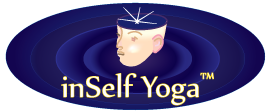Meditation Yoga
Yogeshwarananda explained to me that a deceased fellow approached him for learning meditation. The person asked to be taught kriya yoga and said that he was disinclined for physical body yoga like asana postures and pranayama breath infusion.
Yogeshwarananda explained to this person that kriya yoga is based on a foundation for pratyahar, just as listed in the Yoga Sutras of Patanjali. To Yogesh’s mind, one cannot do kriya yoga unless one has a minimum basic tendency for pratyahar sensual energy withdrawal and disinterest in sensual excitement.
In this definition, kriya yoga is termed by Patanjali as samyama, which is the three higher aspects of yoga, as dharana deliberate focus on transcendence, dhyana momentary spontaneous focus of the same, and samadhi prolonged spontaneous focus.
Asana postures is for developing the most efficient use of the physical body. Pranayama breath infusion is for tuning the subtle body so that its give maximum support for higher yoga.
Once postures and breath infusion are mastered, the yogi can do pratyahar, where he/she withdraws his/her sensual interest in the physical world and in the subtle body support for physicality. However, a problem arises, where in the case of deceased persons who only have a subtle body and no physical one, it is discovered that certain self-destructive behavior cannot be removed except when having social interactions in physical circumstances.
That means that such persons must do the two preliminary steps of yoga, which Patanjali listed as yama behavioral restraints and niyama social permissions. In the astral existence it is not likely that one can achieve expertise in the prohibitions and permissions. Hence the plan to complete those two processes in the astral world is faulty.
